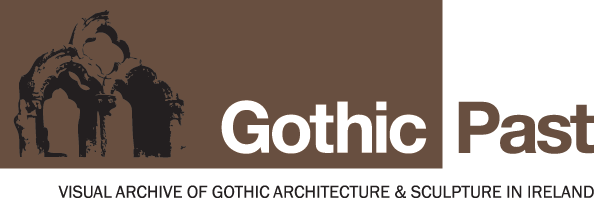Edwin Rae and Irish Tomb Sculpture
Edwin Rae and Irish Tomb Sculpture

The key monument of the 'Ormond Group', so called becuase many of the tombs were created for the Butler earls of Ormond.
The geographical reach of Edwin Rae’s image collection spreads across the whole island of Ireland and beyond. This visual reference collection of Irish architecture and sculpture was an essential tool in allowing him to write works like his entry in The New History of Ireland, covering Irish architecture and sculpture from 1169 to 1603. There are areas upon which Rae concentrated, and these areas of concentration are clear in the number of images devoted to them in his collection.
Perhaps the most important area of concentration was tomb sculpture. Rae’s articles on the subject remain seminal, particularly the two devoted to Irish Sepulchral Monuments of the Later Middle Ages, published in the Journal of the Royal Society of Antiquaries of Ireland in 1970 and 1971. Here Rae isolated the stylistic traits of what he felt were two distinct workshops of sculptors working in late medieval Kilkenny and Tipperary: the Ormond School and the O’Tunney Atelier.
Rae’s discussion of these two workshops was based around the distinctive ways in which the sculptors carved the plate armour worn by their subjects, and perhaps more importantly, the style and iconography of the ‘weepers’ ranged around the tomb chests. These weepers take the form of various saints, portrayed in lively detail with their various attributes. Rae’s images of the ‘weepers’ capture the naive charm of these figures, posing as they often do with their instruments of torture. The oddities of their iconography particularly exercised Rae, and his hunt for comparative examples of their attributes and juxtaposition led him far outside Ireland. A search through the Rae collection for a particular saint or attribute reveals just how far and wide this hunt became.

Margaret FitzGerald, wife of Piers Butler, 8th earl of Ormond. Said to be a formidable woman, Margaret's connections with the Pale and Dublin, where many aristocratic families commissiond full size effigies for their tombs, may suggest a link between the Ormond sculptors and sculptural workshops in the Pale.

Rae saw the sculpture of the Purcell tomb chest as an early example of the arrangement of weepers that became standard in late medieval Kilkenny and Tipperary. There is something almost experimental about the arragement of the figures and micro-architecture here, as if new elements are being brought together for the first time.

The tomb of Piers Fitz Oge Butler of Lismalin, housed at Kilcooley abbey. Although this is an early signed work by Rory O'Tunney, it is clear that the sculptor is not experimenting with the arrangement of the weepers and their architectural housing. There is a real sense of assurance and regularity in the design.

